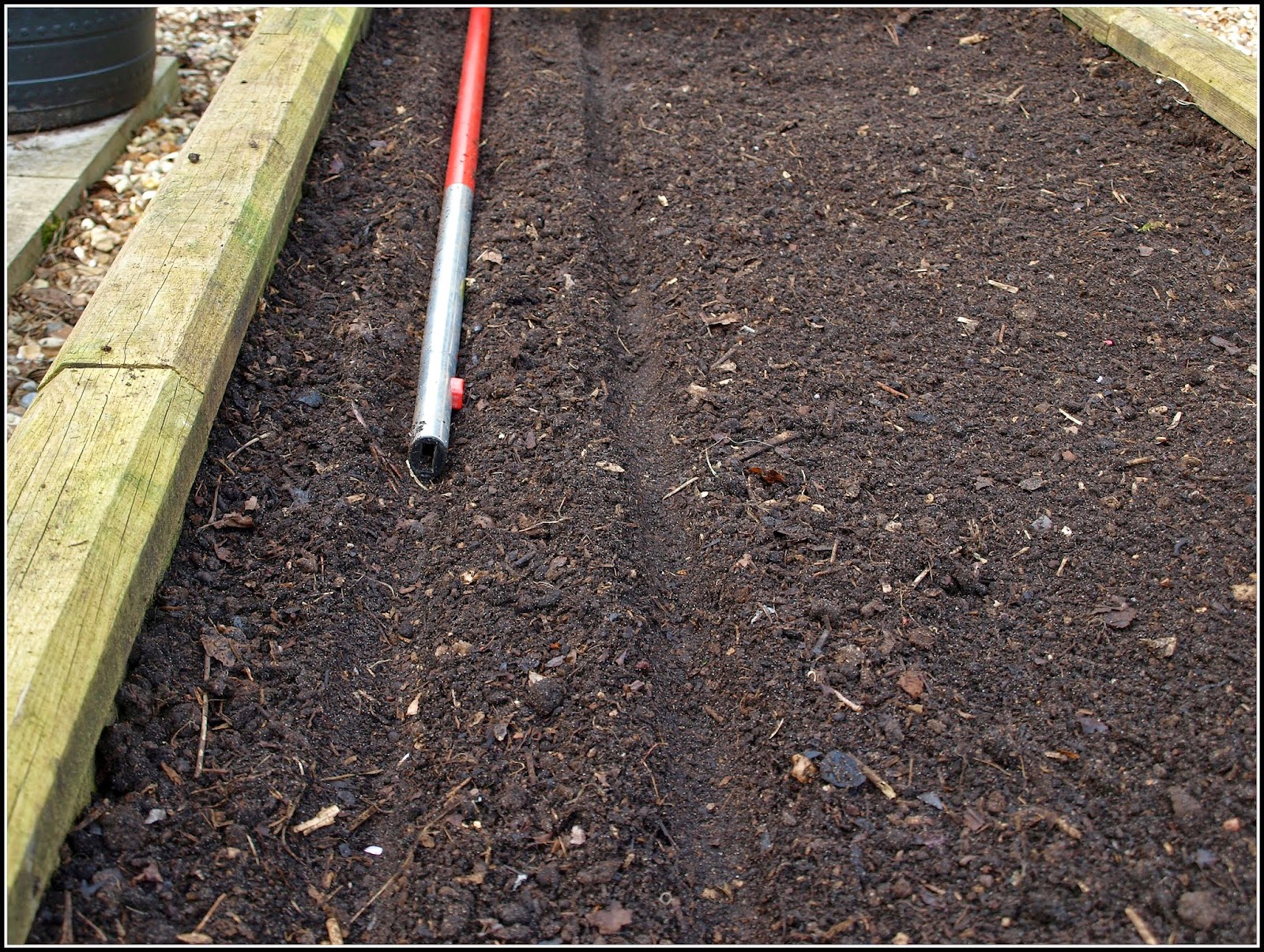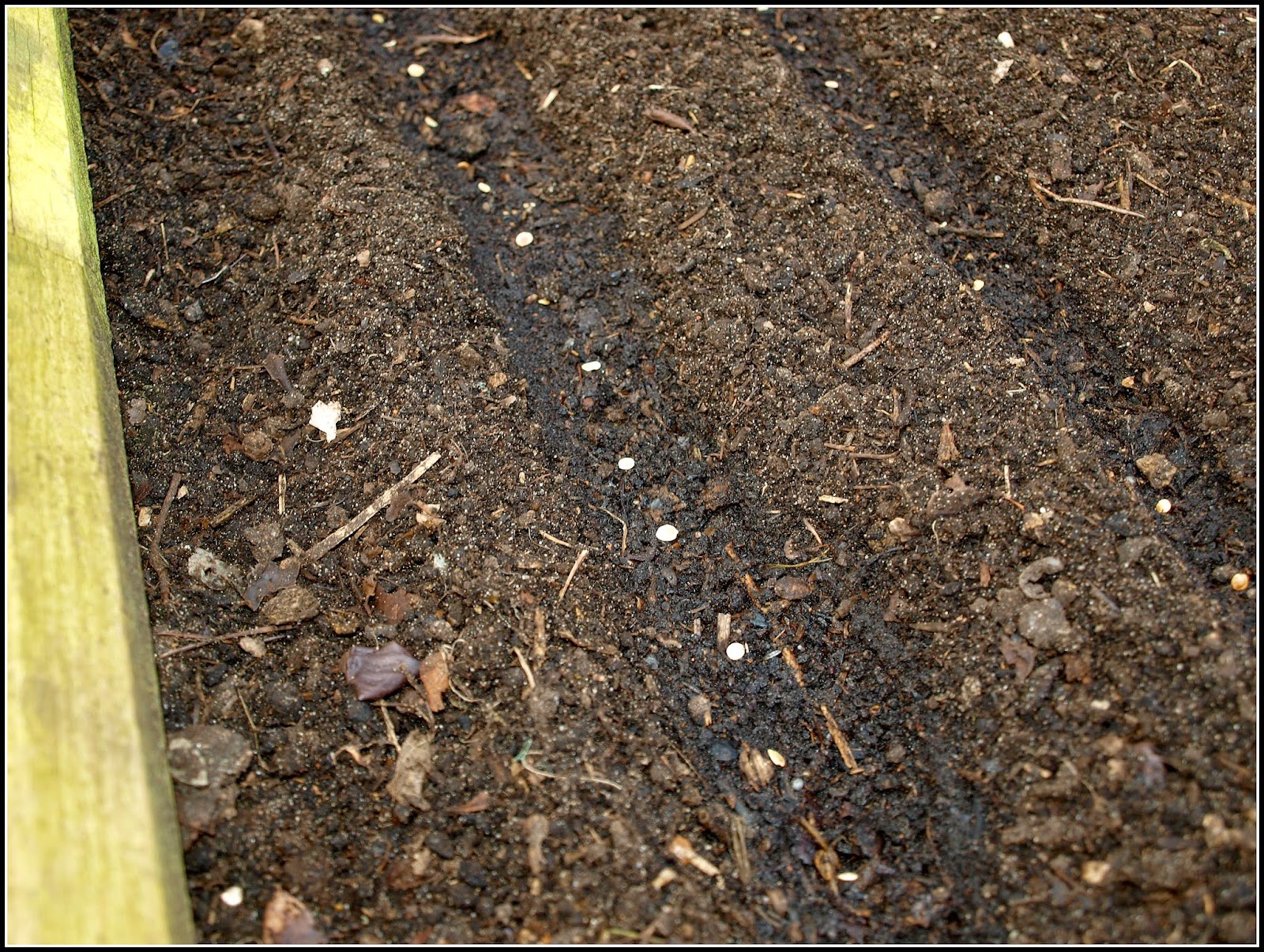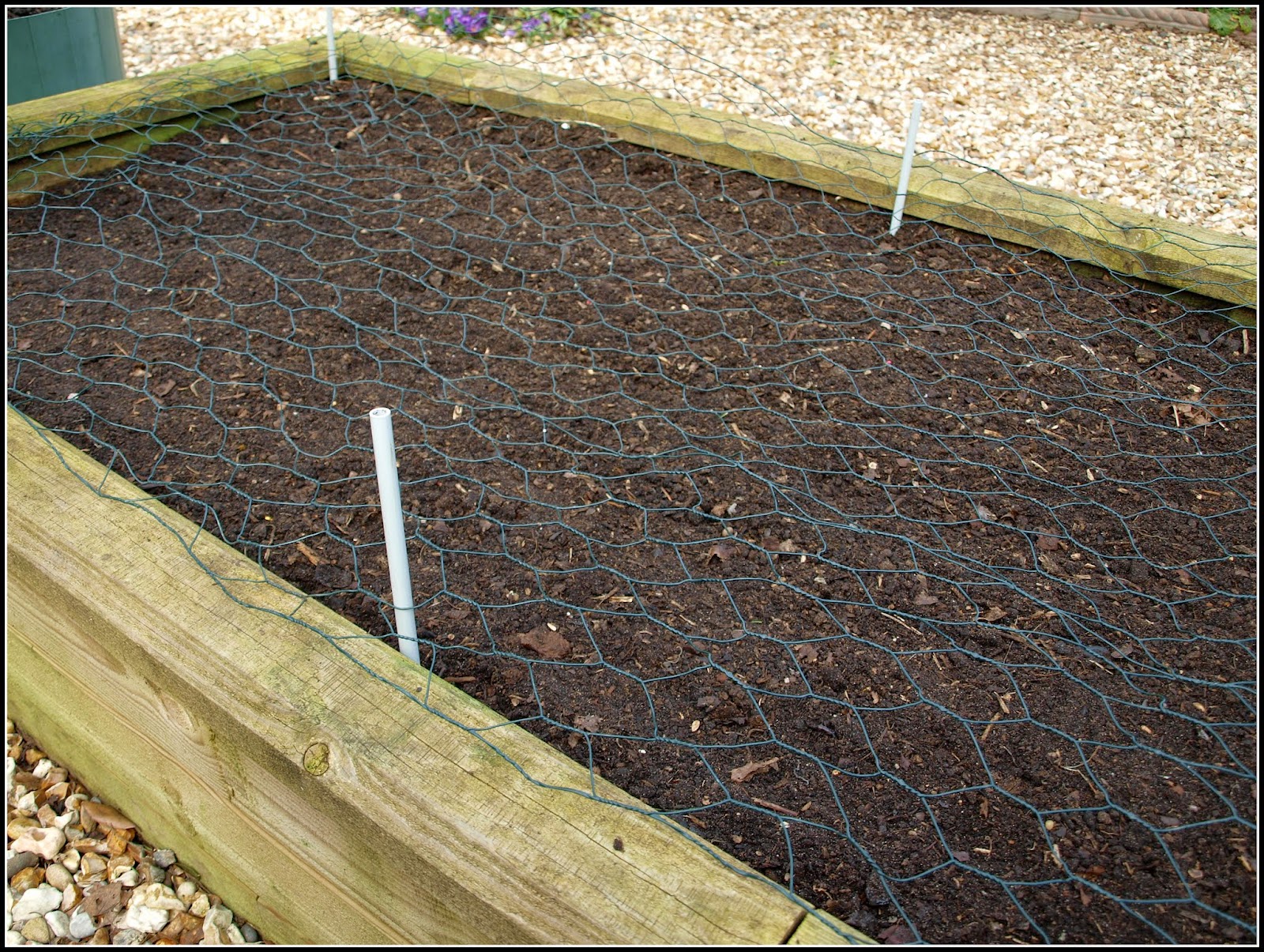Taking advantage of my 3-days-a-week working regime and a still, dry day I used last Thursday afternoon to sow my Parsnips, Carrots and Beetroot.
The Parsnips have gone into the big Woodblocx raised bed again, but on the side where I grew Carrots last year. I have sown two rows - one of "Hollow Crown" and one of "Duchess", which was so successful last year. The "Hollow Crown" ones are from a 60p packet from Wilkinsons, so it will be interesting to see how the cheap seeds compare with the much more expensive ones.
This is my method for sowing the Parsnips. First I rake the top layer of soil and pass it through a riddle (garden sieve) to remove the big lumps and bits of twig from the home-made compost.
When the soil has been raked to a fine tilth I tamp it down with the flat of my rake to make it quite firm. Then I press the handle of the rake into the soil to make drills about an inch deep. It is lucky that my rake has a detachable handle! I then moisten the seed-drills carefully, using a small watering-can.
Then I place the seeds in individually by hand. Obviously this is only practical when you are sowing a very small number! It makes sense to do this job on a still day, because Parsnips seeds are big and light and can easily be blown away by the wind.
After sowing the seeds I carefully cover them with a thin layer of dry soil and pat the drills down flat. The last part of the procedure is to cover the whole bed with some chicken wire to stop cats and foxes digging in it.
When they are ready, I will plant my Leeks in the other half of this bed, next to the Parsnips, but they are a long way off ready yet:
Having done the Parsnips, I moved over to the new raised bed, and used the same procedure to sow three rows of Carrots and one of Beetroot. The Carrots are "Autumn King", "Nantes" and an experimental one called "Kelly F1". The Beetroot are half a row each of "Boltardy" and "Baby Beet Action". The latter is specifically bred for harvesting young.
When the sowing was complete, I erected some flexible plastic hoops to support an Enviromesh cover for the bed, to keep out the Carrot Root Fly.
This is an enormous piece of Enviromesh, which I bought last year. I wanted it to be big enough to cover even some tall crops like Brussels Sprouts. The Carrots will never get very tall, so the spare Enviromesh is rolled up and held down by bricks.
I am worried about the Enviromesh though. It is full of holes! It has spent the Winter rolled-up, in the garage, and I think the pesky mice may have tried to burrow into it - or perhaps to steal it for making nests. I can't think of any other explanation. One way or another, it is severely damaged.
I rather fear that the Carrot Root Fly may exploit these bigger-than-intended holes! I can only hope that the fact that the bed is 40cm high may act in my favour. Carrot Root Flies are allegedly low-fliers. I don't really want to buy another big piece of Enviromesh, because it is not cheap.
With the Roots now sown it really seems like the new growing-season has begun!










Can you not sort of darn it, I did it last year cause my mesh had a few areas with holes.
ReplyDeleteSince the threads are not actually broken, I plan to try to tease them back into shape manually - but it will be a big job!
DeleteI'm not sure the soil up here in the north is warm enough to sow in quite yet. I wonder what's caused the holes. It doesn't look like mice as they'd have surely gnawed right though whereas it looks as though the thread is out of shape.
ReplyDeleteI think something (i.e. mice) has been clawing at it, rather than chewing.
DeleteWe sow parsnip seeds individually as Jo mentioned it's a bit early for us especially on a clay soil. I wouldn't worry too much about those holes they are rather small I guess the threads have just pulled a little when you have been using the mesh
ReplyDeleteGood luck with those root crops. I had holes in my row cover last year, but much bigger than yours. I did have damage, but not as much as if it were in the open. I'm going to try to be better with keeping any holes repaired this year. My row covers (since I use cheap fabric netting) get real holes though. Your are just some fibers that have moved, but not broken.
ReplyDeleteThis reminds me to check to see if it's time to sow parsnips around here. I've got some fresh seeds to give them a proper try this year. I get little pulls in the mesh that I use also, but fortunately I'm mainly concerned with keeping birds out, though the mesh did seem quite effective at keeping my turnips and radishes free of the boreres that were attacking the roots of previous exposed plantings.
ReplyDeleteThe cats (& maybe foxes) claw at my enviromesh while it is stretched over the hoops and I've found the easiest and quickest way to realign the fibres is to run the flat of my hands over it in a stroking action - as this is on the allotments I try to do it when there is no one around ! Once you get the hang of it, you can get rid of the holes completely because the relatively rigid fibres are quite mobile in the mesh. Hope this helps.
ReplyDeleteThat enviromesh is fine, no need to darn those holes as they aren't really holes, they are where it's bunched so if you just grab either side & wiggle it against itself it should realign & the holes go. It isn't broken in those shots, just pushed out of line.
ReplyDeleteYour new bed looks great, nice & chunky. I really need to get out into mine & start. I have sown some carrots & parsnips in boxes but most of the time is spent picking up cat mess (not mine).
Great blog, I have brassica seedlings coming on in the greenhouse and this weekend's job is to dig over the veg patch. It's still to cold to sow outdoors up here, but I will be ready when it is :)
ReplyDeleteThanks for sharing your technique - I'm trying parsnips for the first time this year, but I don't imagine I'll be sowing mine until May!
ReplyDeleteYour soil looks fantastic Mark. I have a similar parsnip technique but more haphazard! It's helpful to see how you do it.
ReplyDeleteI'll sow my leeks in pots similar to yours next month, because if I do them too soon they get too big for the pots before I'm ready to plant them out (which I now do in late summer, to avoid the leek moths we get here). If I had more enviromesh I'd plant them out sooner but will save that for my onions.